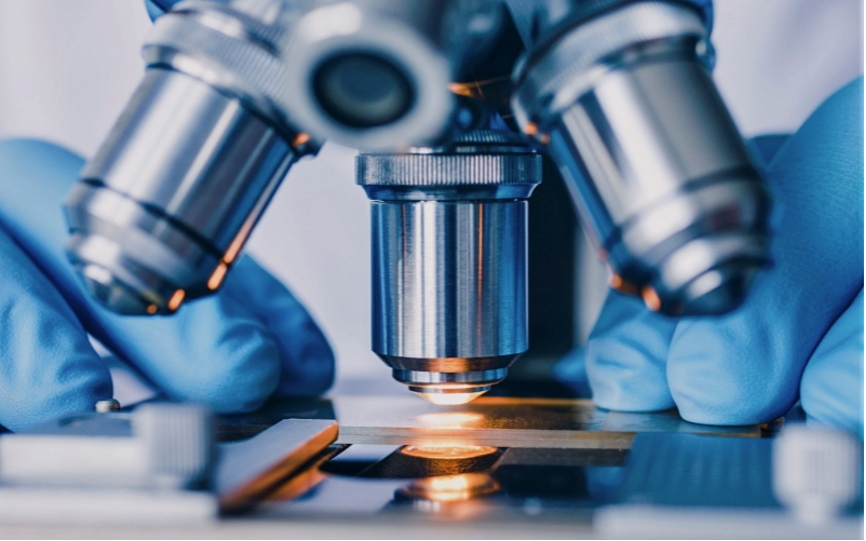Many people use microscopes without realizing how to properly clean and maintain them. Proper cleaning can extend the life of the instrument. After learning the following, you too can become an expert in cleaning and maintaining microscopes without the help of others.
Why do I feel that the microscope is always unclear?
If you find that in the process of using the microscope, you are always unable to adjust to the satisfactory clarity. You need to consider whether it has been too long since you cleaned your microscope, but before you do so, you need to make sure that the loss of clarity is not caused by stains. There may be other reasons for the loss of clarity, such as settings for illumination and aperture not being adjusted appropriately. If everything is fine, then consider cleaning the microscope, but you must always be careful with this process as it can lead to damage to the machine such as wear and tear of the lenses.
Can I clean all the parts of the microscope myself?
You can clean almost all parts of the microscope, but if the seller of the microscope has specifically labeled the parts that should not be touched, then you should give them to a professional to clean if possible. The main thing that affects the display effect is the glass lens, etc. All the glass pieces that can be touched can be cleaned by yourself including the eyepieces, the objective lenses, the glass that protects the sensors, and the focusing lenses. Often microscope sellers will recommend that you clean the surface of the camera sensor.
Precautions before starting the cleaning process
- If you need to move the position of the microscope, you must be very careful to avoid collision or shaking, which may lead to internal structure breakage or parts falling off.
- Do not touch the lens directly with your hands to prevent dust particles from abrading the lens.
- Choose indoor cleaning to prevent damage to the microscope from outside sunlight or dust.
- Unplug all microscopes before starting cleaning to prevent personal safety and the microscope from being affected.
What are the tools used for cleaning?
Lint-free cloths, lint-free swabs, cleaning agents, dusting brushes, distilled water, vacuum cleaners, etc.
How to clean mechanical parts?
Stereo microscopes are mainly divided into mechanical and optical parts. Cleaning the mechanical parts prevents dust from accumulating and causing it to stick to the lenses.
Wipe the microscope case with a damp paper towel and add a suitable amount of detergent in distilled water to clean the mechanical parts. Finally, wipe it clean with a lint-free dry cloth.
How to clean the optical parts?
- Find the location of the dirt that mainly affects the display, check all the possible locations, for example, if there is a stain on the camera, move the camera the position of the stain will not change, if it changes the position it means it is not on the camera.
Clean the dust with a vacuum cleaner, you need to buy a vacuum microscope specially designed for cleaning microscopes, not all vacuum cleaners are suitable, after using a vacuum cleaner to clean the dust, then use a compressed air spray to clean to make sure that you can clean all the dust particles.
- Before purchasing a compressed air spray, you need to choose a type that does not contain oil or solvents. Some people think that using oil will protect the lenses from scratching. This idea is wrong. Because the oil will remain on the lens, it is difficult to clean it without using the right solution, and it will only lead to lens damage in the end.
- After cleaning the lens with distilled water, and then use the appropriate length of lint-free cotton swabs to clean the lens, it is best to use a wooden stick of cotton swabs, it should be noted that if the lens has solid dirt on the lens must first be cleaned with distilled water, if only the dust that is as long as to clean up the dust can be.
4.When using lint-free cotton swabs, you need to fully wet the swab with liquid before using it to avoid damaging the lens coating. Then use a circular motion to wipe to ensure that you can effectively clear the dirt.
- Prevent the microscope from getting dirty, in order to ensure that the microscope can effectively prolong its service life, it is necessary to do a good job of preventive work after cleaning. Compared with the occasional cleaning, after each use of the microscope to clean the external parts of the time spent less, and more effective cleaning effect. Covering the microscope after each use ensures that airborne dust accumulates on top of the lens when it is not in use, which reduces the frequency of cleaning, and also effectively protects the lens and reduces the risk of scratches on the lens.
To summarize
Microscopes need to be cleaned regularly, as well as simply cleaned after each use, and good preventive work, all of which can extend the life of the microscope. Because the microscope’s lens is very sensitive, if you want to be able to better utilize it, you should do a good job of maintenance, as long as the microscope is cleaned correctly according to our above methods, you can ensure that the microscope to maintain good clarity.
